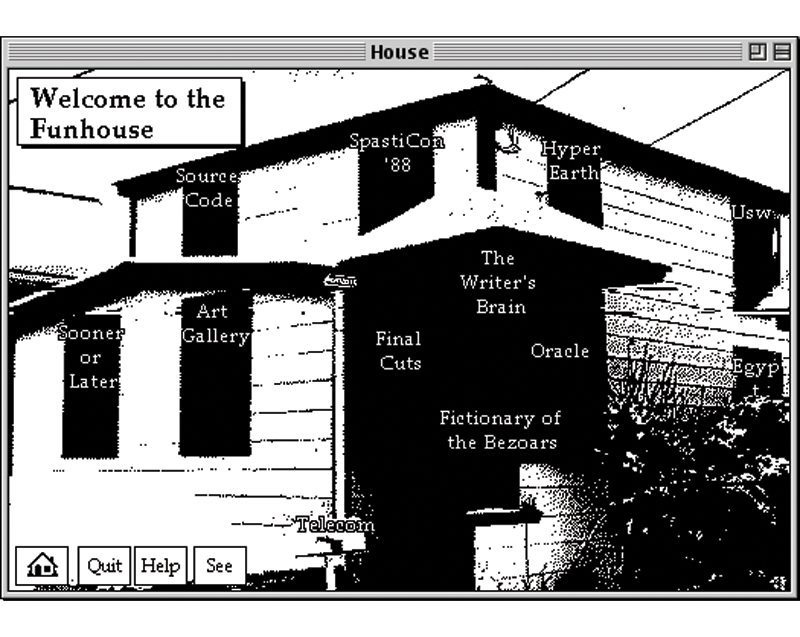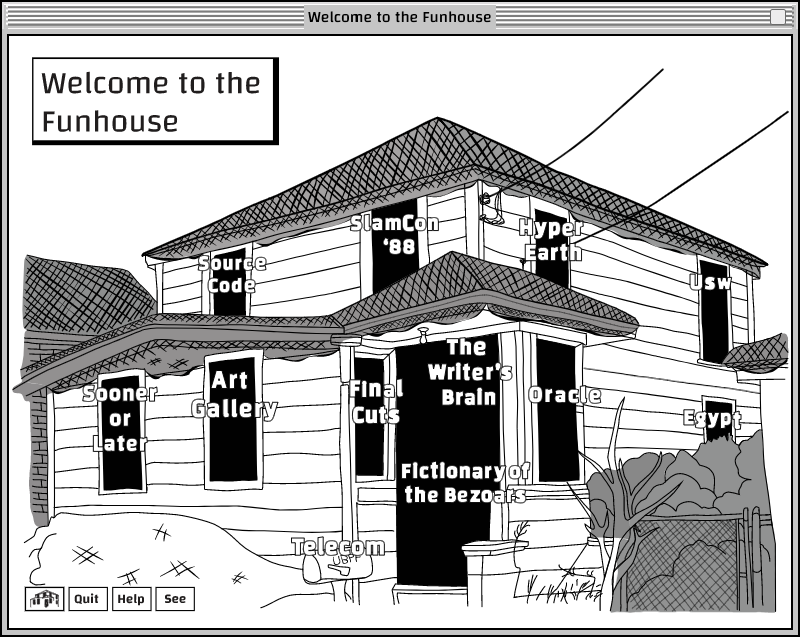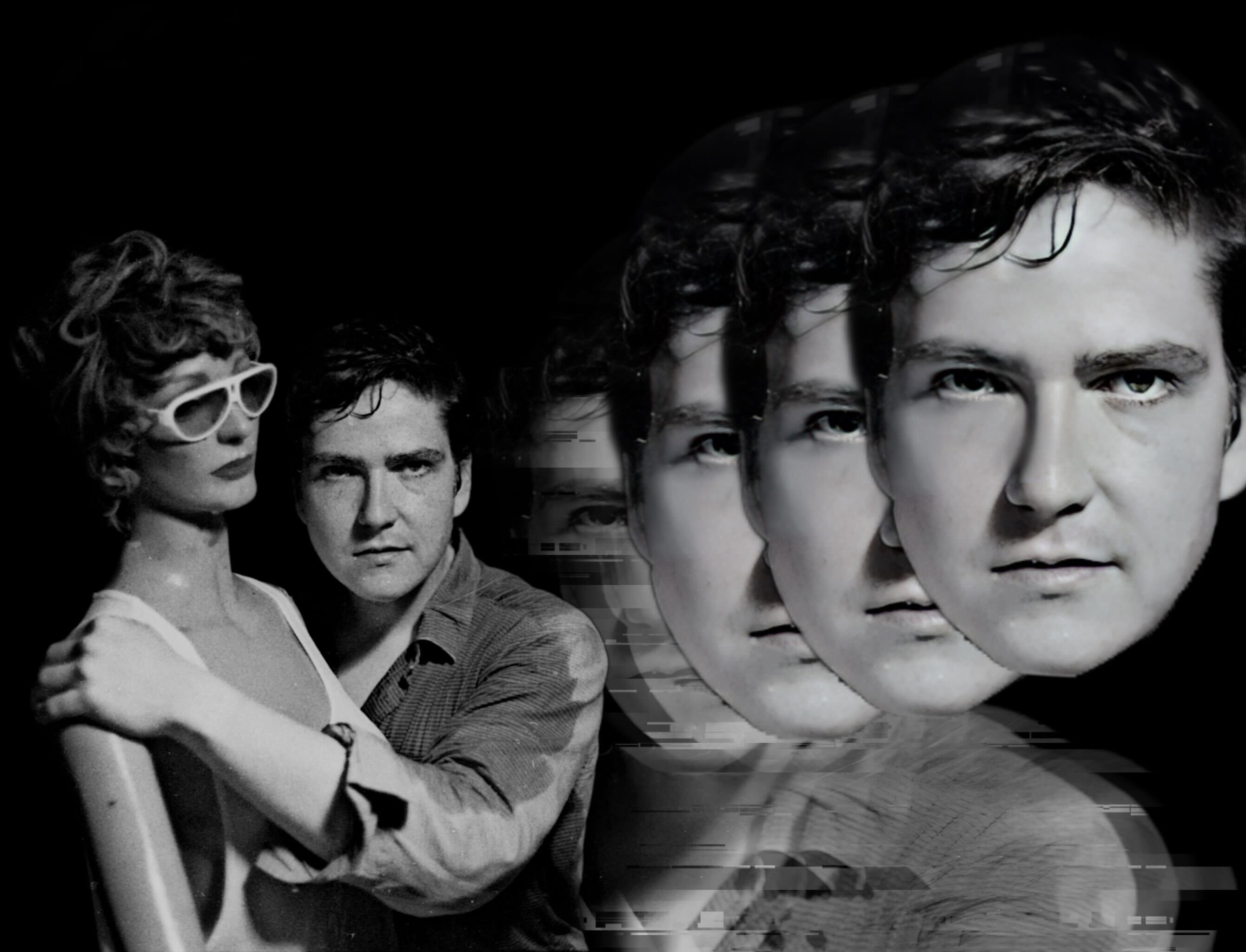Project Overview: Adapted from McDaid’s Specs for the Project
One of the first hypermedia novels, Uncle Buddy’s Phantom Funhouse was published in 1992/93 by Eastgate Systems, Inc. on the now defunct Mac-only platform HyperCard. While the interactive fiction of the period was parser-driven, and literary hypertexts were powered by then-new link-based architecture, Funhouse offered a radical departure, combining text, graphics, and audio that presented the story as a series of artifacts within the HyperCard environment, an approach that could be called “modally appropriate artifactual fiction.” Today’s game design theory would probably call it an immersive diagetic environmental fiction, but those terms hadn’t been invented yet. And therein lies a central challenge of this reconstruction: maintaining a sense of the historical situatedness of the text––its verisimilitude as an artifact of a particular time––while remediating it in a way that makes the work accessible today and open to re-platforming in any future environments.



